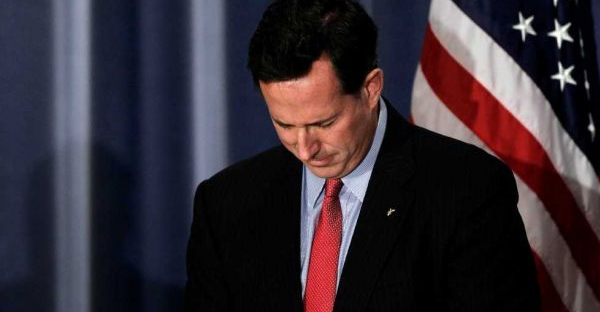 If you are going to read the latest New York Times piece on candidate Rick Santorum and the "Catholic vote," your first task is to keep reading -- past the headline, the one that simply says: "Santorum Fails to Capture Catholic Vote."
Come to think of it, read past the opening anecdote as well, since it tells why a Catholic mother or four has decided that she will be voting for Mitt Romney in the Maryland primary, despite the fact that "she shares the same values" as Santorum. The key is that Romney is more tolerant of other religions.
If you are going to read the latest New York Times piece on candidate Rick Santorum and the "Catholic vote," your first task is to keep reading -- past the headline, the one that simply says: "Santorum Fails to Capture Catholic Vote."
Come to think of it, read past the opening anecdote as well, since it tells why a Catholic mother or four has decided that she will be voting for Mitt Romney in the Maryland primary, despite the fact that "she shares the same values" as Santorum. The key is that Romney is more tolerant of other religions.
I would assume that a Catholic who talks about "values," as opposed to "doctrines" or "beliefs," may not be the kind of Catholic conservative who would lean toward Santorum. Then again, the story doesn't tell us enough about this particular voter to know that for sure. That's kind of the point.
But hang on, because the story later jumps right into the heart of the "Catholic voter" question. Prepare to smile, GetReligion readers:
Analysts see many reasons for Mr. Santorum’s lagging among Catholic Republican voters, the main one being that Catholics, who make up about a quarter of the total electorate, are not monolithic and are more representative of the electorate as a whole.
“There is no Catholic vote, per se,” said Catherine E. Wilson, a political scientist at Villanova University. “They mirror the general population, with progressives, moderates and conservatives. And Santorum is winning the conservatives.”
Wait, there's more where that came from:
An important indicator of voting preference is how often someone attends church. Those who attend at least once a week tend to be more conservative than those who attend occasionally. But only about one-third of Catholics who responded to the latest New York Times/CBS News poll said they attended church weekly.
Mr. Santorum was asked last week by Sandy Rios, a Fox News contributor hosting a program on American Family Radio, to explain why he was not winning more Catholic voters.
He said he did not understand it himself -- “I really wish I could tell you,” he said -- but he said he thought it might correlate with church attendance.
“With folks who do practice their religion more ardently,” he said, “I tend to do well.”
Actually, it is rather strange to quote Santorum making that point, since the "pew gap" trend -- the more someone attends worship services, the more likely she or he is to vote for a morally or culturally conservative candidate -- has been clear in the hard numbers for several decades. This makes it sound like it's the candidate's opinion, which is rather beside the point.
Later on, the story even states the obvious on the divisions within American Catholicism:
... (Most) Catholics disagree with Mr. Santorum on various issues, according to recent New York Times/CBS News national polls. A majority have used artificial birth control and few attend weekly Mass. Most support either same-sex civil unions or marriage, and only a few would prohibit abortions altogether.
In his unsuccessful bid for re-election to the Senate in 2006, Mr. Santorum also lost the Catholic vote, by 18 percentage points. He was running against Robert P. Casey Jr., also a Catholic.
More good information, although I would mention that Catholics who disagree "with Santorum" on "various issues" are usually Catholics who disagree with the teachings of their church on those issues. Also, it would be important to note that Casey, at the time of that vote, was still viewed by most Catholics as a relatively conservative leader on cultural and moral issues (although not to the degree of his father, the legendary pro-life Catholic Gov. Robert Casey). Liberal Democrats and liberal Catholics bit their lips and allowed Casey to be the candidate, in part because of their loathing of Santorum.
The story contains lots and lots of valid information on why centrist and liberal Catholics are uncomfortable with Santorum, as it should. As you read the Times report, you might want to click here and head over to that familiar GetReligion typology on Catholic voters. You can see the rough outlines of the different camps in some passages in this story.
Once again, the news here is that the story takes crucial steps toward deconstructing the "Catholic vote" myth. So bravo for that.
